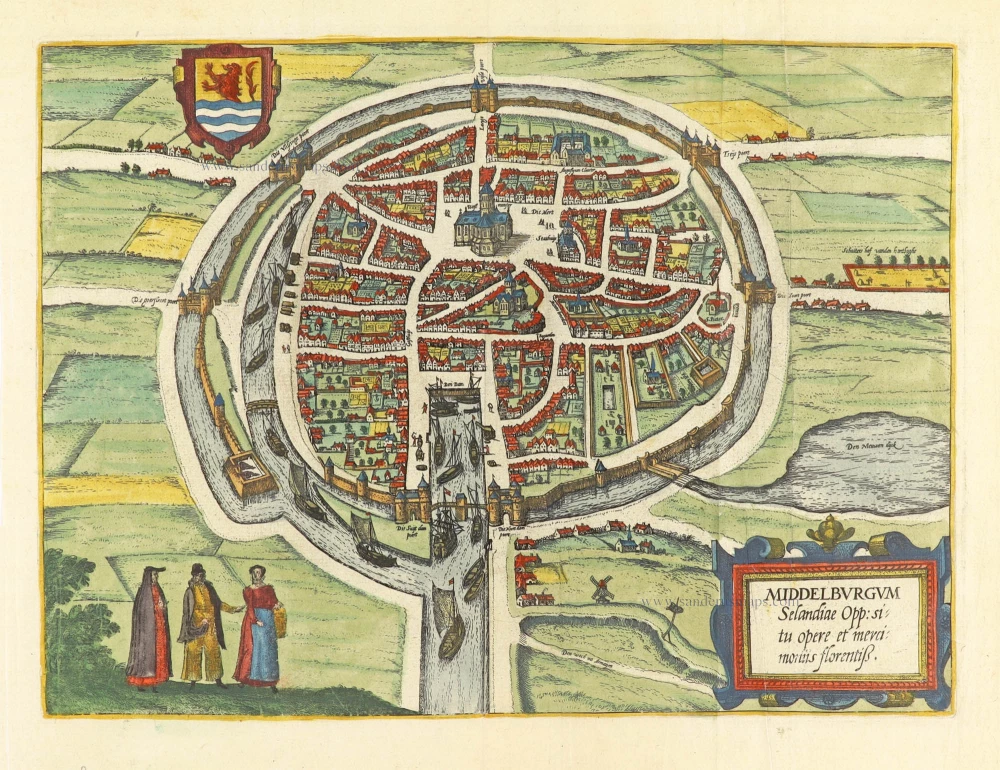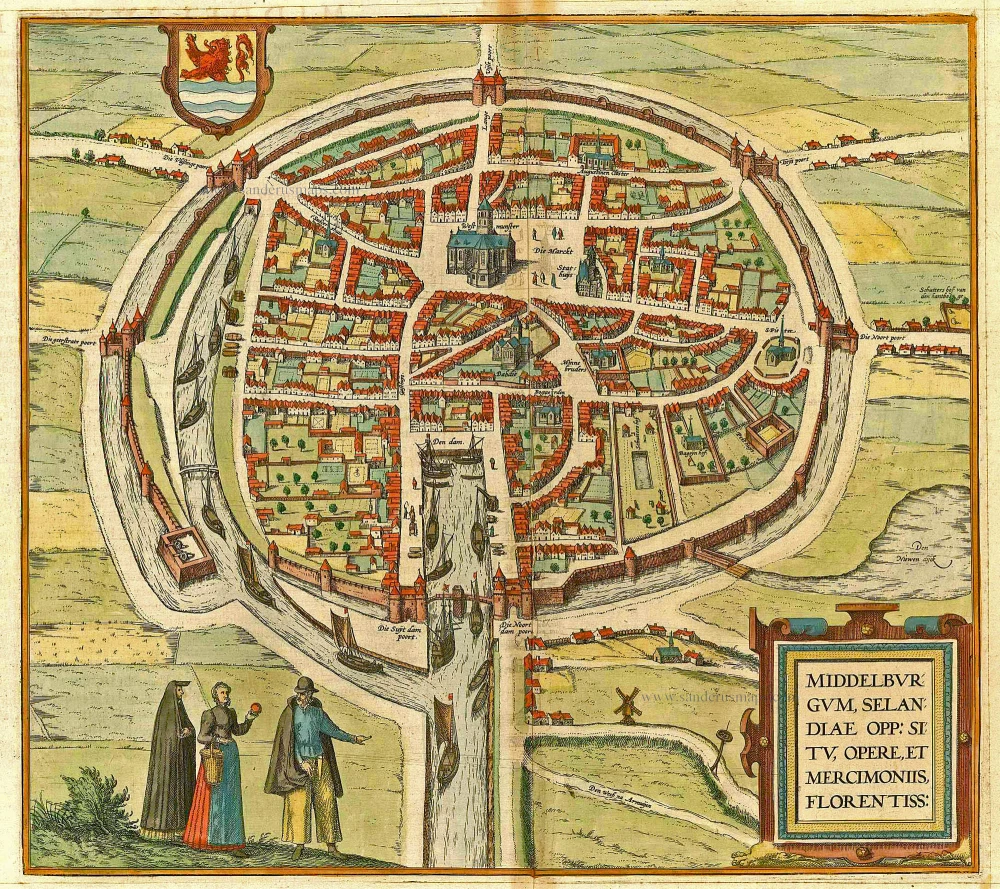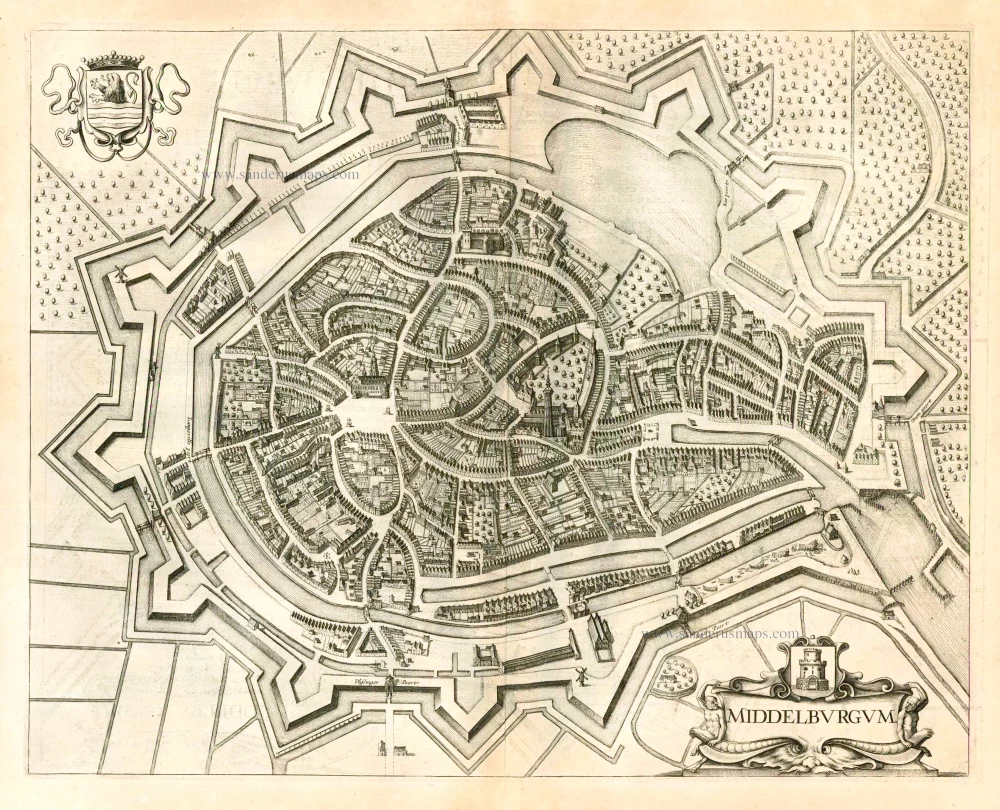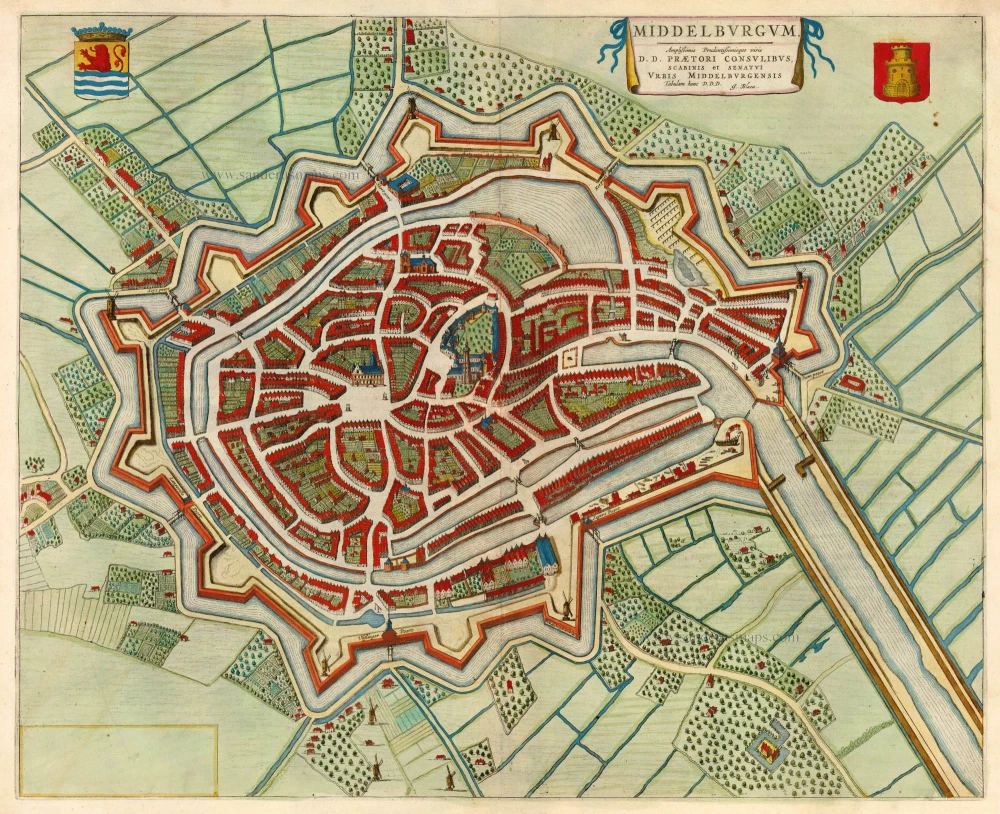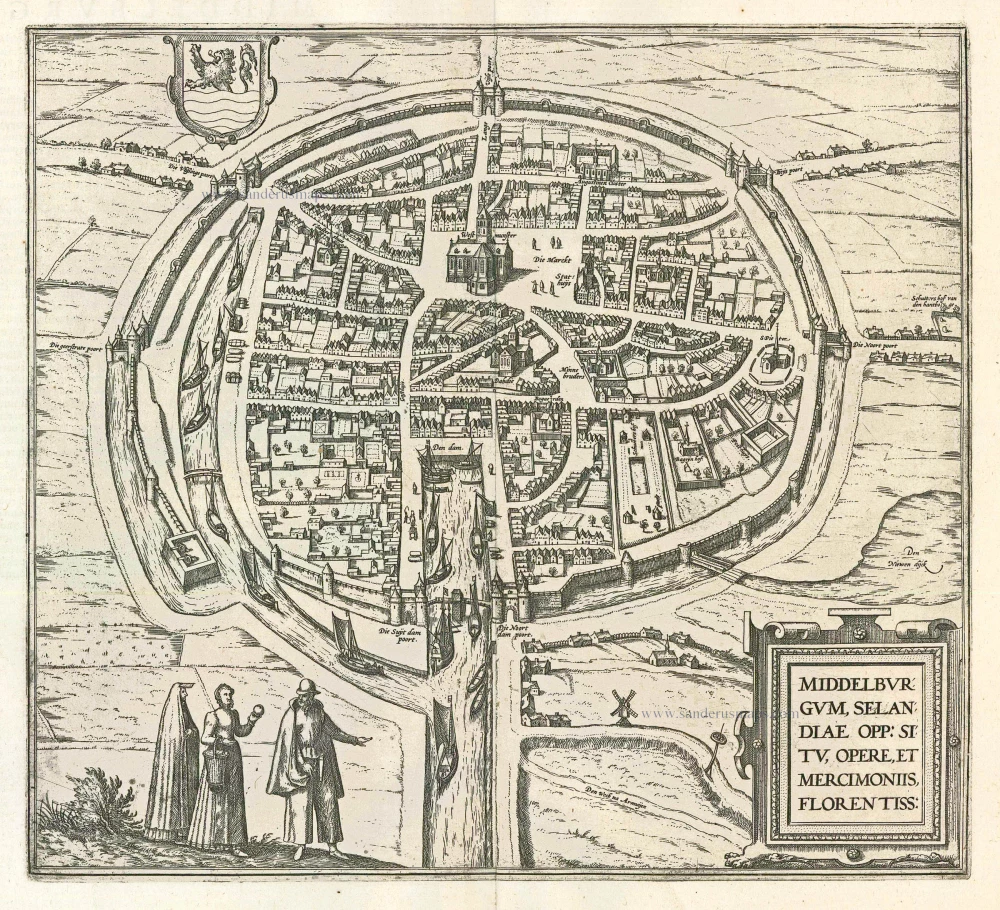Middelburg by Lodovico Guicciardini. 1582
Lodovico Guicciardini (1521-1589)
Lodovico Guicciardini, an Italian writer and merchant from Florence, arrived in Antwerp in 1541 and lived there until he died in 1589.
His best-known work, the Descrittione di tutti I Paesi Bassi, was published in 1567 by the Antwerp publisher Willem Silvius. It was an influential account of the history and arts of the Low Countries, accompanied by city maps by various leading engravers. It was a great success right from the start, and many editions, translations, extracts, and adaptations have been released to this day. Although he experienced relative prosperity during certain periods, he ended his life in poverty.
In the first edition of the three original Italian publications of the Descrittione, Guicciardini describes the happy and prosperous Netherlands before the uprising against Spain. Only in the third Italian edition of 1588, published by Plantijn in Antwerp, does he show how the state of the country has gradually changed as a result of the war. This was the last edition published in Antwerp. In 1589 both Plantin and Guicciardini died. It would take until 1609 before a new edition was published in the northern Netherlands.
As new editions appeared, the number of illustrations increased, and several prints were replaced by new ones. The first four editions were mainly provided with woodcuts, the majority of which concerned the Southern Netherlands. In the later editions, only copper plates were used for an increasing number of engravings of cities and regions of the entire Netherlands. The work appeared in folio, oblong and duodecimo editions.
Middelburgum Selandiae Opp: situ opere et mercimoniis florentiß.
Item Number: 13613 Authenticity Guarantee
Category: Antique maps > Europe > The Netherlands - Cities
Bird's-eye view plan of Middelburg by Lodovico Guicciardini.
Title: Middelburgum Selandiae Opp: situ opere et mercimoniis florentiß.
Oriented to the west.
Date of the first edition: 1582.
Date of this map: 1582.
Copper engraving, printed on paper.
Image size: 235 x 315mm (9.25 x 12.4 inches).
Sheet size: 295 x 350mm (11.61 x 13.78 inches).
Verso: Blank.
Condition: Hand-coloured, excellent.
Condition Rating: A+.
From: Guicciardini L., Description de Touts les Pais-Bas, autrement appellés la Germanie Inferieure, ou Basse Allemagne; ... Antwerp, C. Plantin, 1582. (Guicc. Ill., #6)
Lodovico Guicciardini (1521-1589)
Lodovico Guicciardini, an Italian writer and merchant from Florence, arrived in Antwerp in 1541 and lived there until he died in 1589.
His best-known work, the Descrittione di tutti I Paesi Bassi, was published in 1567 by the Antwerp publisher Willem Silvius. It was an influential account of the history and arts of the Low Countries, accompanied by city maps by various leading engravers. It was a great success right from the start, and many editions, translations, extracts, and adaptations have been released to this day. Although he experienced relative prosperity during certain periods, he ended his life in poverty.
In the first edition of the three original Italian publications of the Descrittione, Guicciardini describes the happy and prosperous Netherlands before the uprising against Spain. Only in the third Italian edition of 1588, published by Plantijn in Antwerp, does he show how the state of the country has gradually changed as a result of the war. This was the last edition published in Antwerp. In 1589 both Plantin and Guicciardini died. It would take until 1609 before a new edition was published in the northern Netherlands.
As new editions appeared, the number of illustrations increased, and several prints were replaced by new ones. The first four editions were mainly provided with woodcuts, the majority of which concerned the Southern Netherlands. In the later editions, only copper plates were used for an increasing number of engravings of cities and regions of the entire Netherlands. The work appeared in folio, oblong and duodecimo editions.

